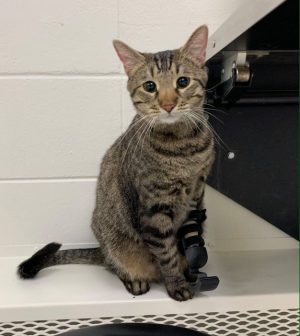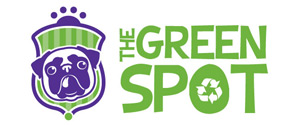- Do you subscribe to Dharma Dog Training’s Newsletter? You should.
- A Unique Campaign from The Humane Society of the United States
- Rabid bats in Omaha- Stay safe, prepared with these tips
- Springtime Activities in Omaha
- Mill Dog Monthly from Bailing Out Benji
- World Spay Day, Legislative Alert in Nebraska
- Attend the Nebraska Rescue Council’s monthly meeting this Saturday
- Five Hard-to-Ignore Reasons to Adopt!
- Paws in Pink to Benefit Breast Cancer Foundation
- VCA, Inc. Acquires MidWest Vet Specialists from Kansas State University
Tips for Choosing the Right Cat Food

Choosing the right food for your cat is a major concern for pet owners. A properly balanced diet is essential for a cat’s growth and energy. Most pet owners are unsure what to feed their cats, especially when they bring one home for the first time. There are tons of cat foods available at pet stores from different brands, having several formulas and flavours. How do you choose the ideal one then?
Here’s all you need to know in brief about your cats’ nutritional needs for their well-being.
Cat’s basic nutritional needs
Here are some of the basic nutrients you must provide your cat in balanced form for their daily diet:
- Animal Protein
Cats need animal protein from fish, eggs, chicken or turkey because they contain amino acids like arginine and taurine needed for their growth and development of healthy tissues.
- Carbohydrates
While carbohydrates are not typical cat food, you can put rice, corn and wheat as fillers because they provide an instant energy source to your cats.
- Animal fats
Good animal fats are essential for your cats to promote their good health. It includes Omega-3 and Omega-6 fatty acids and other healthy fats present in fish and poultry meat.
- Vitamins
Your cat food must have vitamins in the right balanced proportion to have a naturally beautiful fur coat, improve cat immunity, and aid in the proper functioning of muscles and nerves.
- Minerals
All cat food should contain minerals like iron and calcium to promote the growth of healthy bones, teeth, claws, prevent anaemia, and increase milk formation during pregnancy and lactation.
Dry vs Wet Cat Food
Cat food can be wet or dry according to the water content. Most pet owners are confused about whether to give dry kibble to their cats or wet cat food. Wet cat food usually has 60% or more water content, while dry food has less than 14% water. One basic difference is that wet cat food has longer shelf life than dry kibble, but they do not stay fresh for long once they are opened and served. Though there are different opinions about the nutrition content, vets believe that both dry food and wet food have their share of benefits.
Wet cat food is considered the best to prevent dehydration and kidney problems in cats. It improves their urinary health, helps to manage weight and constipation issues.
On the other hand, dry cat food is cheaper and can be left open for longer to allow free-feeding. Cats are often picky about their feeding time, and free-feeding allows them to eat whenever they are hungry. Dry cat food is also considered beneficial for feline dental health. It reduces plaque and tartar accumulation in their teeth. Cats with a fussy eating habit may adapt more to dry food, which gives them the required energy and nutrients in concentrated form.
What to look for on the label?
Go through your cat food label to ensure you find the following:
- Check the expiry date of canned cat food before purchasing.
- The ingredient list must contain proteins, especially animal protein, as the first ingredient.
- Look for the names of the protein source, such as chicken, fish, turkey, etc.
- The other ingredients must include probiotics, fish oils, eggs, and plant fibre.
- There should be vitamins, amino acids and minerals like linoleic acid, iron, calcium, taurine, and vitamin A.
- Cat food ingredients which also contain fruits and vegetables like carrots and cranberries.
- Check whether there are natural preservatives like Vitamin E.
What to avoid on a cat food label?
While checking the label on the cat food cans, ensure that you avoid it if you find any of the following:
- Any by-product in the list of ingredients.
- Chemical preservatives like BHA, BHT and others.
- Added sugars or other sweeteners.
- More than 50% of carbohydrate fillers such as wheat or cornmeal.
- 100% vegetarian diet without animal proteins.
- Ingredient list without meat protein as the main ingredient or within the first three.
- Artificial flavours, additives and colours.
- Canned food not approved by AAFCO.
Other things to consider
Additionally, there are some other things to consider as well while choosing the best cat food.
Feed your cats according to their age. Kittens should generally eat vet-approved kitten formula food. When they reach about one year of age, they are old enough to shift to normal adult cat food. Similarly, senior cats should be given a special senior cat formula diet after consultation with the vet.
Lastly, check your cat’s weight and activity level before choosing the cat food. It helps to ensure how many calories would be right for your pet. An active cat that doesn’t tend to put on much weight needs regular adult cat food. However, lazy cats that prefer less activity or maybe overweight should get low-fat content cat food.
Conclusion
As a human parent to a cat, you would understand what best suits your cat’s health. Now that you know the basic nutritional needs and the mistakes you need to avoid, choose what seems to be the best-canned food in your budget. Sometimes, you make a few wrong choices before finding the right combination of cat food that makes your pet stay in fine fettle and also appeals to their tastebuds.
Latest News
-
Join Us at Pick A Pooch 2025: A Fun-Filled Weekend for the Whole Family
A Fun-Filled Weekend for Pet Lovers and Families Alike Mark...
- Posted 1 year ago
- 0
-
Beardmore Presenting Sponsor At This Years Pick-A-Pooch event
🐾 We are thrilled to announce that Beardmore Subaru is...
- Posted 3 weeks ago
- 0
-
How Having A Pet Can Change Your Life
Having a pet can open your heart in ways that...
- Posted 2 months ago
- 0
-
How To Improve The Life Of Your Senior Pet
Do you have an elderly fur baby and want to...
- Posted 3 months ago
- 0
-
Springtime Activities To Enjoy With Your Furry Friends
Are you preparing for warmer weather and want some ideas...
- Posted 4 months ago
- 0
-
Pros And Cons Of Microchipping Your Pets
Have you considered whether your pets should be microchipped and...
- Posted 4 months ago
- 0
-
The Best New Fun Toys For Dogs And Cats
The Best New Fun Toys For Dogs And Cats Did...
- Posted 5 months ago
- 0
-
Heartfelt Ways To Show Your Pet You Love Them
Did you know there are more ways to show your...
- Posted 6 months ago
- 0



















You must be logged in to post a comment Login